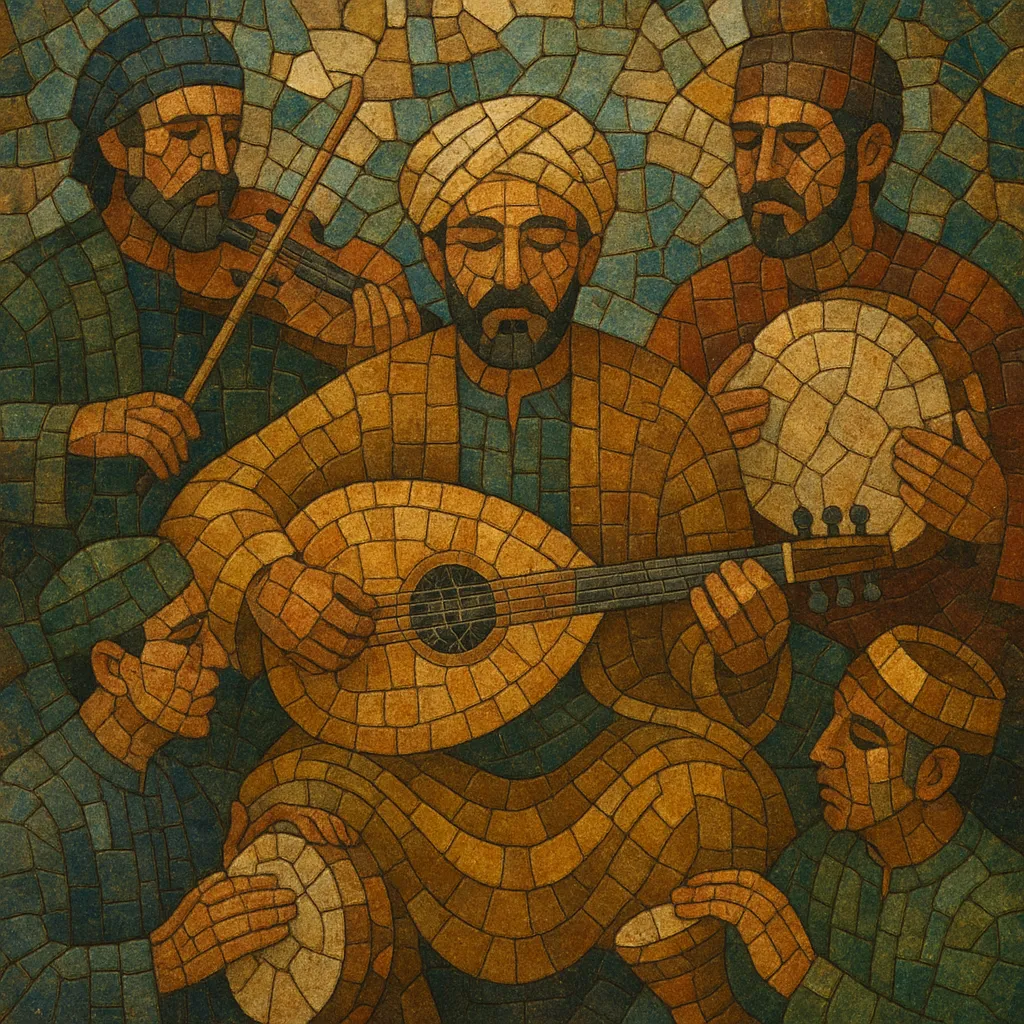Orkes gambus is a Malay–Indonesian ensemble style centered on the gambus (the Arab oud) and frame drums, blending Arabian Peninsula musical aesthetics with Malay poetic song and dance practices. Typical lineups feature the gambus/oud as the lead melodic instrument accompanied by marwas/rapai (frame drums), rebana, hand percussion like darbuka, and often violin or accordion adding sustained melody and countermelody.
Modal melodies commonly draw on Arabic maqam flavors (e.g., Hijaz, Bayati, Nahawand), while rhythmic cycles align with lively social dance contexts such as zapin and hadrah celebrations. Repertoire ranges from devotional praise songs (qasidah/sholawat) to love-themed ghazal-style pieces and festive dance numbers, performed at weddings, community gatherings, and on early radio. The music’s ornamented vocals, call-and-response refrains, and short instrumental improvisations (taqsim) highlight its Arab–Malay syncretism and its warm, communal character.
Orkes gambus emerged within Hadhrami (Yemeni) Arab diaspora communities across the Malay Archipelago, especially in today’s Indonesia and Malaysia. Migrants brought the gambus/oud, devotional repertoires, and Gulf rhythmic aesthetics. By the 1920s–1930s, mixed Arab–Malay ensembles were performing for weddings, religious gatherings, and on early urban stages.
The style entered the commercial sphere through 78‑rpm recordings and radio broadcasts in port cities such as Surabaya, Batavia/Jakarta, and Medan. Ensembles codified a format with gambus lead, frame‑drum grooves, and violin/accordion support, pairing Arabic‑tinged maqam melody with Malay poetic texts and communal dance functions.
As urban popular music expanded, orkes gambus interfaced with orkes melayu and film‑song influences, helping lay the rhythmic and timbral foundations for later Indonesian and Malay popular styles. Its devotional strand also fed into organized qasidah performance, shaping a modern stage form (qasidah modern) with larger ensembles and amplification.
While not always dominant in mainstream media, orkes gambus has persisted in community life, religious festivities, and regional cultural circuits. Since the 2000s, a renewed interest in Islamic pop and heritage performance—along with internet video platforms—has brought gambus timbres and repertoire to broader, younger audiences, inspiring contemporary acts that blend traditional frameworks with modern production.


